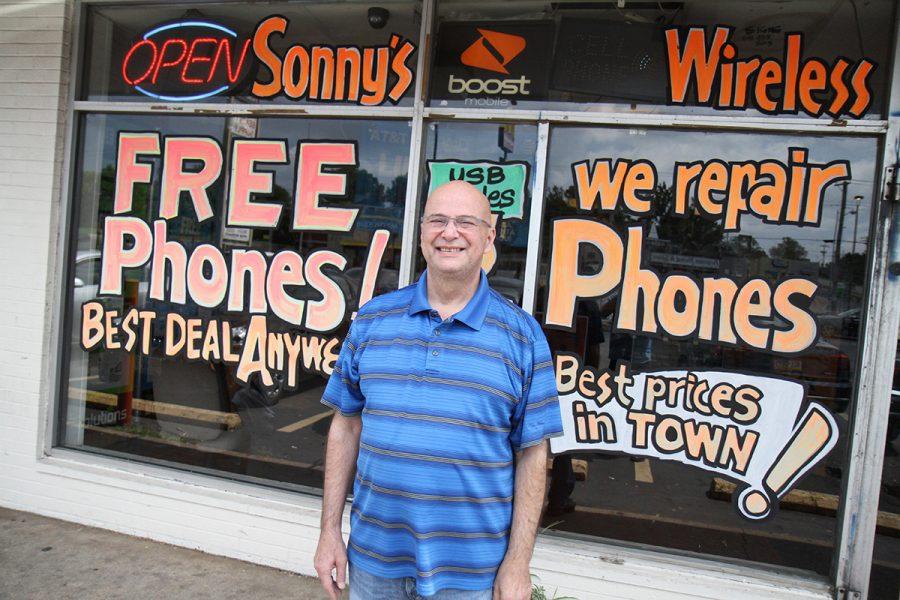Five years after Ferguson, merchant remains in ‘survival mode’
Published August 8, 2019
Five years ago, a lot of things changed for St. Louis business owner Sonny Tzion Dayan.
“I’m in what we call a survival mode right now,” said Israel native Dayan, 58. “I’m just trying to make it with the means that we have at the moment.”
That hasn’t been easy because Dayan’s business, a small cellphone store in Ferguson called STL Cordless, sits near the epicenter of a social earthquake with consequences that are still being felt, five years later, here and throughout the nation.
Across the street is a small liquor store where African-American teenager Michael Brown was seen on videotape taking a box of cigarillos in August 2014. The unarmed Brown was later shot by white Ferguson police officer Darren Wilson, sparking weeks of protest, riots and international media coverage in what long had been an unassuming municipality of 20,000 people.
On Nov. 24, 2014, the St. Louis County prosecutor’s office announced that a grand jury had declined to indict Wilson, and unrest that night left Dayan’s store in shambles. Dayan, a member of Temple Emanuel, responded to an alarm at STL Cordless and arrived to find that his shop had been looted. He watched in horror as neighboring businesses went up in flames.
In August after Brown’s death, his store had been hit by unrest, but he was not expecting the level of violence that took hold that night in November.
“The second time around, the devastation was on a different scale,” Dayan told the Jewish Light in 2014. “Buildings burning, the streets closed. On top of the fact that we got broken into and lost thousands of dollars, we were closed almost a week after.”
Today, Dayan is both optimistic and frustrated. In front of his shop on a pleasant, breezy weekday, he frets over an estimated 30 percent decline in business since the Brown shooting, and expresses anxiety over a depreciation in property values. He believes his landlords want to sell the small strip center in which his store is located, leaving his future uncertain.
Dayan worries about the possibility of the area losing its core businesses, which can make life difficult for residents.
“Pretty soon, you are getting to a point that the family needs to get milk and they have to get on a bus to travel to get milk,” he said. “I’d hate for that to happen here. This is vibrant part of town, with a lot of opportunity for local folks particularly to make it happen and have some employment closer to home.”
Still, Dayan says, some things have gotten better since 2014. He feels that policing practices have improved and that signs of civic progress can be seen as nearby as fresh construction next door, where a multimillion dollar teen center is being erected by Boys & Girls Clubs of Greater St. Louis.
He sees healthy indicators in other areas as well.
“Dellwood is progressing,” Dayan said of a nearby municipality. “There is a lot of money getting into the city, and they are trying to do some things differently. Hopefully, that will affect us, too.”
Still, Dayan’s concern comes through. Most of his worries seem to center more on the fate of the community than with himself, given that he’s old enough to retire if he wishes.
He said there remains a sense of division between his part of Ferguson along West Florissant and the less racially diverse section of town hugging North Florissant.
“It is just a feeling you get,” Dayan said. “I don’t know. I’m not in the head of the mayor. But the feeling you get is that they gave up on us when the riots went through.”
Dayan also feels that others aren’t always seeing the chance to set up shop in Ferguson and that he’d like more to be done to encourage businesses in the area.
“People are trying, if you give them the opportunity,” he said.
Most worrisome, Dayan said, is that he doesn’t feel job opportunities are being created or communicated to younger males in the community. He recalls hiring a few kids from the area for a local event and the positive effect it seemed to have on them.
“It was just a daytime job for a few hours, but you can tell that they feel so proud having done something and earned money for it,” said Dayan who wondered whether there were possible job opportunities at local construction sites. “Can we hire those kids to do something and give them some pride in earning money and respect?”
Dayan believes that the short-term help the area received was good but that connecting with local youth and giving them a chance at being part of a thriving community is most vital.
“You aren’t just putting in new buildings and more trees,” he said. “That’s not going to resolve your issues. It will look nicer, but you are still going to have the problem. We’ve got to address the actual problems that we have.”
In the meantime, Dayan waits — and survives. He professes to still be the same optimist who refused to board up his windows five years ago because he wanted his customers to shop comfortably in an area that “doesn’t look like a hurricane is going to hit any second.”
He also said he plans to continue operating in Ferguson even if an eventual sale of the shopping center forces a relocation. As Dayan warmly greets customers who come in and out of his shop, the Kirkwood resident talks of even possibly moving to Ferguson. His love for the city comes through with every breath.
Yet so does his frustration as he looks at a shaky environment for the business he’s owned for the past quarter century.
“It’s hard to take, you know, because you put so much into it,” Dayan said. “I thought things would be better.”
















